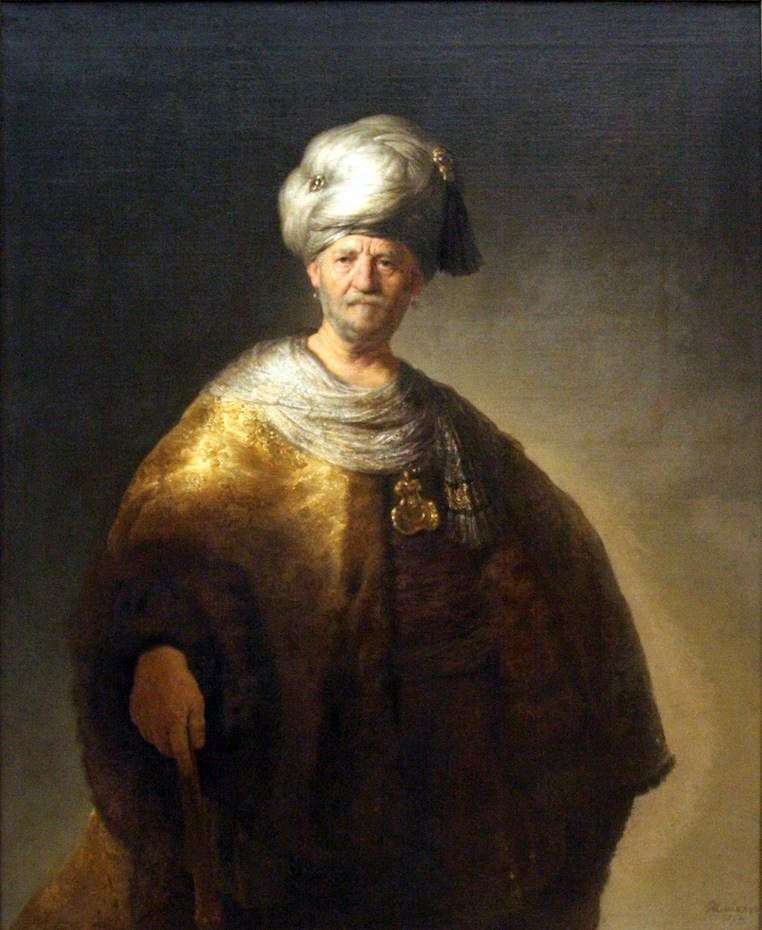
Rembrandt deeply grasped the nature of man: any portrait belonging to his hand is the true biography of a once-living real person.
At the same time, each unique individuality in the portraits of Rembrandt becomes part of human history: the characters of Rembrandt seemed to come out of eternity and stand on its threshold. “Noble Slav” was written by Rembrandt in the middle of the second half of the 1630s, when in the artist’s works all the unusual are especially strong.
During these years, he often dressed his models in exotic robes, which, however, never gave them pretentiousness. This canvas, full of stately solemnity and epic slowness of the author’s narration, is quite unusual for Rembrandt’s early work. The figure of the Slav as if comes up from the depths of a neutral golden-brown background. The light source, placed behind the figure, emphasizes the serene wide outline of the silhouette.
The second source, located in front, lights the precious brocade of the vestment, the light turban fabric with golden radiance. His wrinkled face is brightly lit, penetrating eyes calmly and intently looking at the viewer. At the same time, the expression of a special kind of expression, which opens up to the viewer’s eye, is not alien.
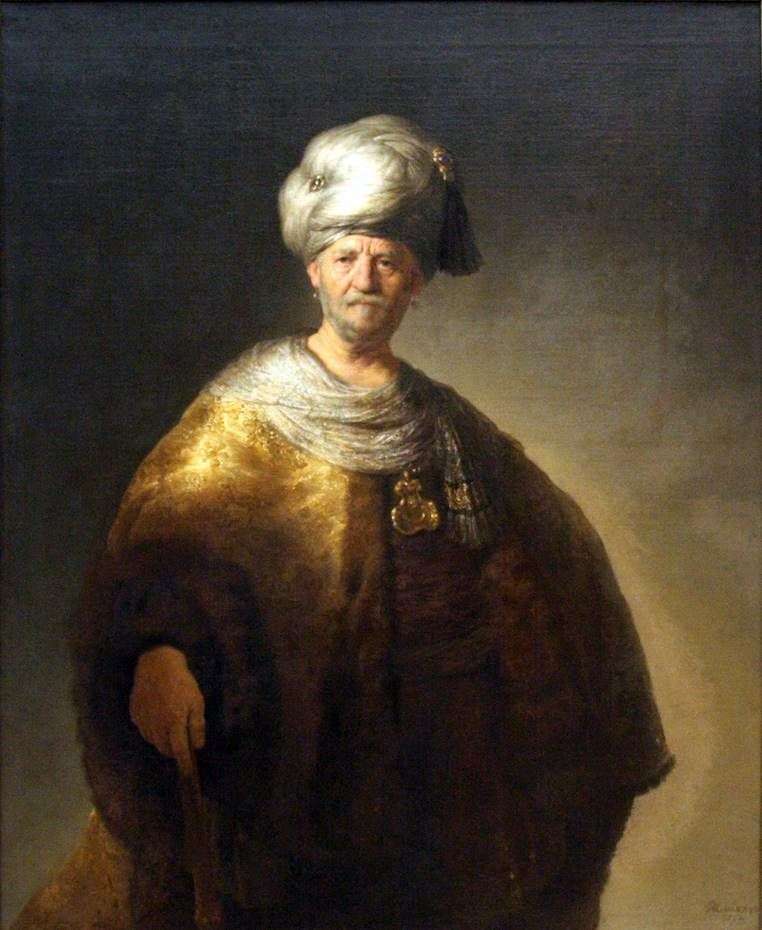 Eslavo noble – Rembrandt Harmens Van Rhine
Eslavo noble – Rembrandt Harmens Van Rhine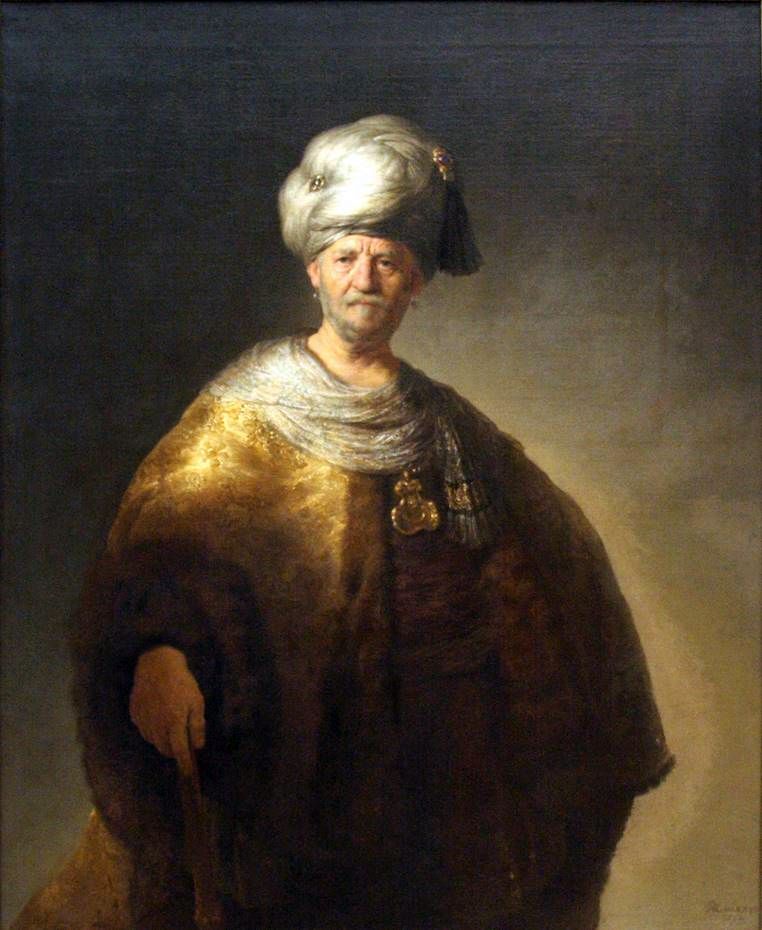 Noble slave – Rembrandt Harmenszoon Van Rijn
Noble slave – Rembrandt Harmenszoon Van Rijn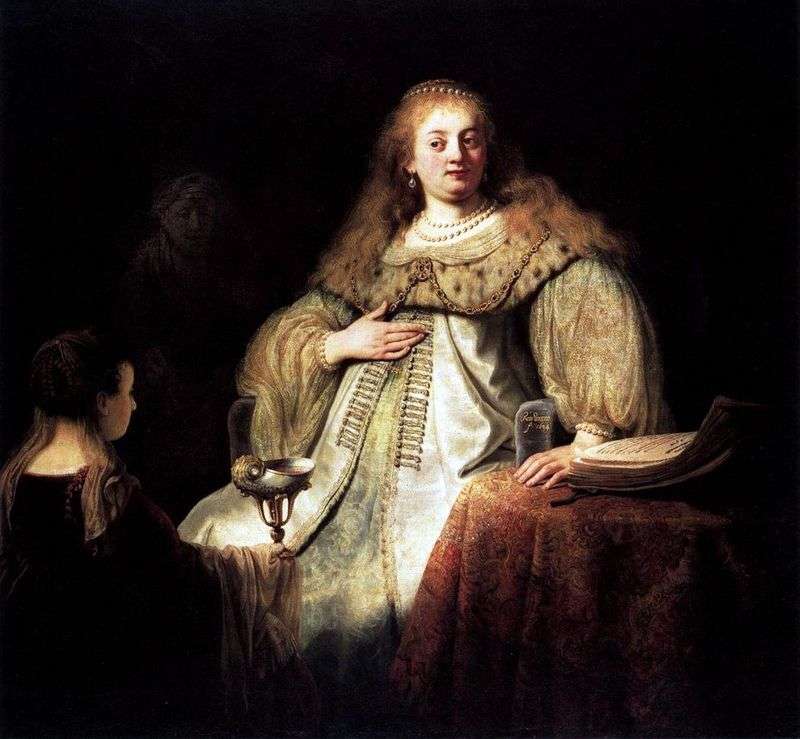 Sofonisba Takes a Bowl of Poison by Rembrandt Harmens Van Rhine
Sofonisba Takes a Bowl of Poison by Rembrandt Harmens Van Rhine Portrait of Saskia van Eilebürch by Rembrandt Harmens Van Rhine
Portrait of Saskia van Eilebürch by Rembrandt Harmens Van Rhine Portrait of Katrina Hoogsat by Rembrandt Harmens Van Rhine
Portrait of Katrina Hoogsat by Rembrandt Harmens Van Rhine Descent from the Cross by Rembrandt Harmens Van Rhine
Descent from the Cross by Rembrandt Harmens Van Rhine Danae by Rembrandt Harmens Van Rhine
Danae by Rembrandt Harmens Van Rhine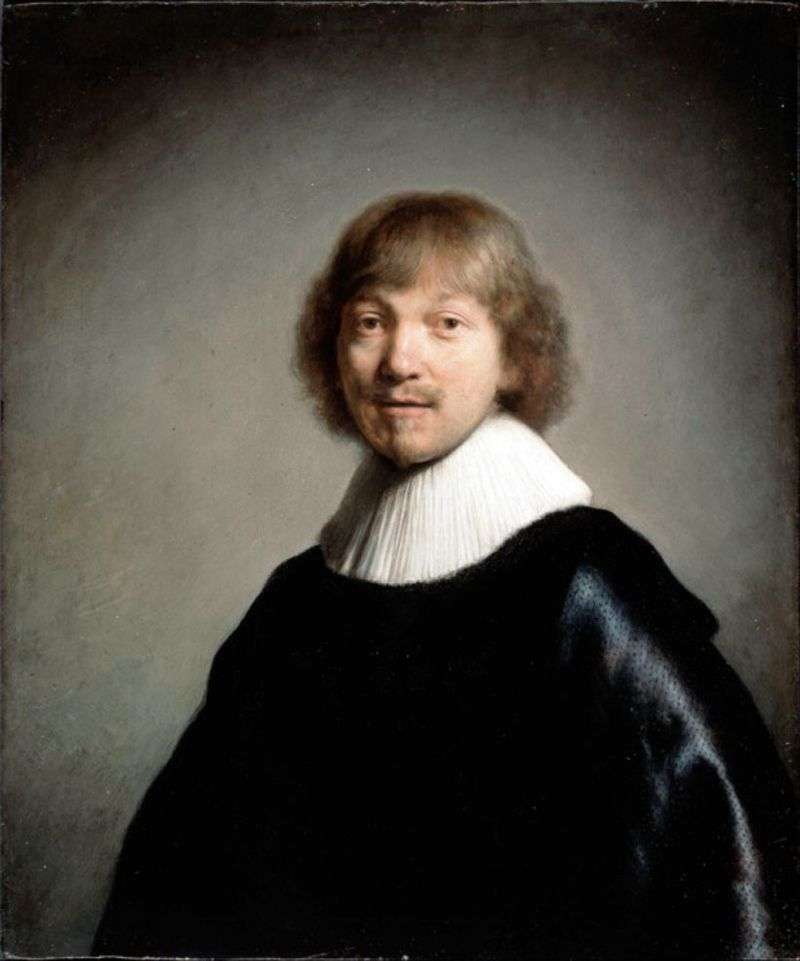 Portrait of Jacques de Gaine III by Rembrandt Harmens Van Rhine
Portrait of Jacques de Gaine III by Rembrandt Harmens Van Rhine